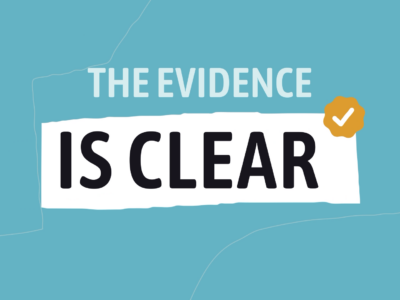Communities in Built for Zero have demonstrated that having real-time, person-specific data on homelessness is a catalytic and necessary step toward making homelessness rare and brief.
Quality by-name data refers to a comprehensive data set of every person in a community experiencing homelessness, updated in real time. Using information collected and shared with their consent, each person in the data set has a file that includes their name, homeless history, health, and housing needs. This data is updated monthly, at minimum. The use and sharing of by-name data must adhere to privacy rules outlined in the Department of Housing and Urban Development’s Homeless Management Information System (HMIS) data standards, which restrict the use of data to providing or coordinating services, creating de-identified client records, carrying out administrative functions, and functions related to payment or reimbursement for services. This ensures that individuals’ personal information remains protected while still enabling communities to collect and use data to drive reductions in homelessness.
Quality data plays multiple roles in helping a community reduce and end homelessness. At the individual level, having this person-centered data enables communities to deliver the tailored solutions any person needs to exit homelessness. At a population level, it equips communities with the powerful insights they need to ensure their efforts are driving overall reductions in homelessness. With this information, they can understand the number of individuals experiencing homelessness over time, as well as the different sources of inflow and outflow that contribute to that number. Equipped with this information, communities can test strategies, target resources, and address systemic barriers as dynamically as they emerge.
This learning brief describes the four components we use to assess whether a community has achieved quality by-name data and the changes and improvements that Built for Zero communities have made on each. We have also identified support and interventions that may help communities achieve quality by-name data. Our aim is to provide homeless response leaders with insights and learning from peer communities’ journeys toward achieving quality data, whether they are considering or already working to achieve that standard for themselves.
How Built for Zero assesses quality by-name data
It is important to understand how to assess whether a community can, with confidence, be certain that it has quality by-name data that accounts for an entire unhoused population.
Learning alongside communities for eight years, Community Solutions has come to understand that the quality of a data system is influenced by four key components: outreach, provider participation, policies/procedures, and data infrastructure. Each of these components ensures not only confidence that communities have the information they need, but that practices are in place to ensure efforts to end homelessness in a community are effective, coordinated, and sustainable.
To assess progress toward meeting the quality standard for by-name data, Built for Zero communities complete a scorecard assessment that consists of a series of yes/no questions. When the answer to each question is yes, and a community consistently and reliably reports metrics related to inflow and outflow over the course of four or more consecutive months, a community has met all criteria.
In the following sections, we will describe and share progress across each of those four key components of a quality data system. We have drawn on a recent analysis conducted by Community Solutions’ learning and evaluation partners, ORS Impact and Equal Measure, who analyzed scorecard data from 65 communities that had completed at least two scorecard assessments as of Fall 2022, comparing scorecard data from communities’ initial submissions to their most recent completion.
At a high level, the findings show increases not only in the percentage of communities that meet each criteria assessed on the scorecard since their initial enrollment in Built for Zero, but also the underlying improvements that occur across communities on their journey to achieving quality by-name data.
1. Effective Outreach Systems
A system of effective, coordinated outreach is critical to ensuring that all unsheltered individuals in a community are engaged and known by the system responsible for helping them exit homelessness.
Coordinated, effective outreach systems facilitate collaboration between local and regional agencies and programs to ensure that outreach teams work together to swiftly connect people experiencing unsheltered homelessness to the homeless response system and available housing.
Effective outreach systems are also a critical component of equipping a community with the comprehensive, quality data that it needs. With strong outreach systems, communities can efficiently and responsively track the size, composition, and locations of the population experiencing unsheltered homelessness. This requires strong data collection practices among outreach teams and a clear procedure for making each engaged person known in a community’s by-name data.
Altogether, the strength of this system determines a community’s ability to reduce the rate and length of unsheltered homelessness and achieve functional zero.
RECOMMENDATION
Comprehensive by-name data depends on effective and coordinated outreach. Communities assessing the strength of their outreach system should consider the following elements of an effective outreach system:
BUILT FOR ZERO SNAPSHOT

The percentage of sampled Built for Zero communities indicating they had defined the geographic coverage and boundaries of their outreach efforts increased dramatically, from 31% at baseline to 72% at the time of their most recent scorecard submission. The proportion of sampled Built for Zero communities with coordinated, effective outreach systems increased nearly threefold over time, and the percent of communities with documented outreach policies grew by over 50 percentage points.
Substantial increases in these percentages since communities’ initial scorecard submission indicate that communities are strengthening their understanding of local outreach efforts, increasingly coordinating efforts, and documenting their practices.
2. Homeless Service Provider Participation
Homeless response systems are composed of various providers. These can include nonprofit organizations, housing authorities, local and federal government agencies, community- and faith-based organizations, Veterans Affairs, shelter providers, and other homeless coalitions. Frequently, each organization works and assesses success toward ending homelessness based on specific program goals.
Making homelessness rare and brief across an entire community requires a collective, rather than fragmented, effort. Communities have demonstrated that they can drive population-level reductions in homelessness when providers come together as a unified team with shared goals and responsibility for reaching functional zero. This progress is fueled not only by their collective strength and resources; they are also able to operate off of a comprehensive and dynamic understanding of the population of people experiencing homelessness.
For all these reasons, provider participation in a larger data system is critical. When providers across the community participate, the populations they serve are represented and known to the system, equipping communities with the knowledge needed to improve their homeless response system, so that it can effectively and equitably serve all populations.
RECOMMENDATION
For a community to have confidence that their by-name data captures all adults experiencing homelessness, at least 90% of providers — CoC-funded or not — should be contributing information to by-name data, and at least 90% of those experiencing homelessness should be served by the providers that report into this data.
Furthermore, by-name data should be able to track individuals experiencing homelessness across homeless service providers and processes, including:
BUILT FOR ZERO SNAPSHOT

As of Fall 2022, 74% of Built for Zero communities included in the analysis have at least 90% of local providers contributing information to their by-name data. This represents a 46 percentage-point increase from initial scorecard submission, signaling notable community progress in engaging more providers across their community in a coordinated system of quality data collection and reporting.
The proportion of communities indicating that providers reporting by-name data serve at least 90% of single adults experiencing homelessness has more than doubled since initial scorecard submission, demonstrating that communities are taking steps toward ensuring their by-name data accurately reflect at least 90% of people in the community currently experiencing homelessness, both sheltered and unsheltered.
3. Policies and Procedures
Defining and codifying policies and procedures can establish shared understanding, guide operations, and ensure sustainability across key players in a homeless response system.
A coordinated homeless response system with established and updated policies and procedures is equipped to endure changes in leadership and staff across the organizations that comprise the homeless response system. When processes for tackling the complex task of measurably ending homelessness in a community exist only by word of mouth, progress can be interrupted by staff or leadership turnover, or delayed due to inconsistent understandings across partnering organizations.
Having documented policies (i.e., the guidelines for decision-making that outline the reasoning behind a course of action) and procedures (i.e., step-by-step instructions for specific routine tasks) in place for collecting and maintaining quality by-name data establishes a clear, consistent, and sustainable approach.
RECOMMENDATION
Policies should document established procedures that communities take to ensure their by-name actively homeless list includes only people known to be actively experiencing homelessness, that people who are no longer known to be experiencing homelessness are accounted for, and that individuals who have not consented to services are counted in by-name data in a manner that protects their confidentiality. Policies that ensure quality by-name data include the following:
BUILT FOR ZERO SNAPSHOT
Nearly 70% of Built for Zero communities included in the analysis have established inactive policies that specify how long an individual cannot be located before they are categorized as inactive, set standards for due diligence in engagement prior to this status change, and detail protocols for retaining active homeless status for individuals who enter institutions for 90 or fewer days. This represents a 49% percentage-point increase from baseline assessment, when 17% of communities were reporting each of these practices. As shown below, communities are also increasingly tracking individuals who have not consented to services in a manner that respects their privacy and establishing policies and protocols for keeping their by-name data up to date and accurate.

4. Data Infrastructure
The foundation of quality by-name data is an effective and efficient data infrastructure. Data infrastructure refers to components and systems — including hardware, software, and networking — that enable data entry, storage, management, analysis, and sharing.
High-quality infrastructure for by-name data sets the stage for a network of providers within a community’s homeless response system focused on the same goal: measurably ending homelessness. With a robust by-name data infrastructure, communities are able to reliably calculate homeless response system inflow and outflow, monitor overall system trends and performance in real time, and leverage insights gained to take informed, strategic, and testable actions toward system improvement.
RECOMMENDATIONS
In order to understand the inflow and outflow of people experiencing homelessness in a community over time, it is essential to accurately capture and track all individuals in the homeless response system from entry to exit, documenting the dates of each person’s entry and status change, including a unique identifier for each individual in order to prevent duplicate client records, and recording individuals’ household type, age, and status across populations. CoCs benefit from a monthly standard report of all currently active individuals with specific data elements, regardless of project enrollment, including date of enrollment, date of engagement, prior living situation, and current living situation data elements.
BUILT FOR ZERO SNAPSHOT
Built for Zero communities are increasingly attaining the necessary elements of a strong data infrastructure that will allow them to reliably calculate inflow and outflow, produce monthly reporting metrics, and monitor system trends and performance. The large majority of communities (94% vs. 63% at baseline) are now tracking individuals’ homeless or housing status and date of their last status change using unique identifiers, which prevents duplicate client records. In addition, the proportion of communities tracking two key sources of inflow — newly identified individuals experiencing homelessness and individuals returning to active homelessness from housing or inactive status — more than doubled from initial to most recent scorecard submission. Communities are also increasingly documenting and tracking individuals’ household type, age, and population statuses since starting their work with Built for Zero.

“All outflow tracked” reflects questions 11A, 11B, and 11C on version 3 of the All Singles By-Name List Scorecard. Answering yes to all questions means a community has a by-name list that tracks outflow to housing, inactive status, and population status change.
“Homeless status/date tracked” refers to questions 7 and 8 on version 3 of the All Singles By-Name List Scorecard. Answering yes to both questions means a community has a by-name list that tracks the current and prior homeless/housed status and date of status change of all individuals using a unique identifier for each individual.
“Population statuses tracked” captures questions 12A, 12B, 12D, and 12E on version 3 of the All Singles By-Name List Scorecard. Answering yes to all questions means a community has a by-name list that tracks multiple population-based statuses and transitions across statuses.
Reflections on the state of Built for Zero communities
Currently, Built for Zero communities must meet rigorous criteria covering four areas of local practices and procedures in order to achieve quality by-name data. Examining community progress toward Built for Zero’s quality standard for by-name data across its various components provides a valuable view of the numerous changes communities are making to accelerate system improvement.
This focused analysis reveals notable advancements in communities’ data infrastructure, policies and procedures, and outreach practices. Whereas most of the communities represented in the current sample did not have effective and coordinated outreach procedures in place when beginning their work with Built for Zero, the large majority have now developed outreach systems that ensure complete geographic coverage and coordinate efforts across providers. At baseline, communities rarely reported they had documented outreach policies. While communities have made significant progress toward this standard, nearly a third have not yet codified outreach processes and protocols that sustain outreach system efforts. Helping communities leverage outreach-related progress toward documenting new practices and procedures in tangible policies appears to be a priority for future support.
Although communities have made considerable progress toward provider participation, with more communities reporting the large majority of local homeless service providers are contributing data to their by-name data, close to half of the communities included in this analysis have not confirmed that the large majority of people experiencing homelessness are served by providers reporting into their by-name data. This suggests that support in engaging providers, developing shared aims among local networks of providers, and utilizing tools such as the provider participation inventory will be valuable to community members, especially newly enrolled communities. Helping communities increase provider buy-in and engagement in collecting and sharing or entering data appears to be another important aim of future interventions and support.




